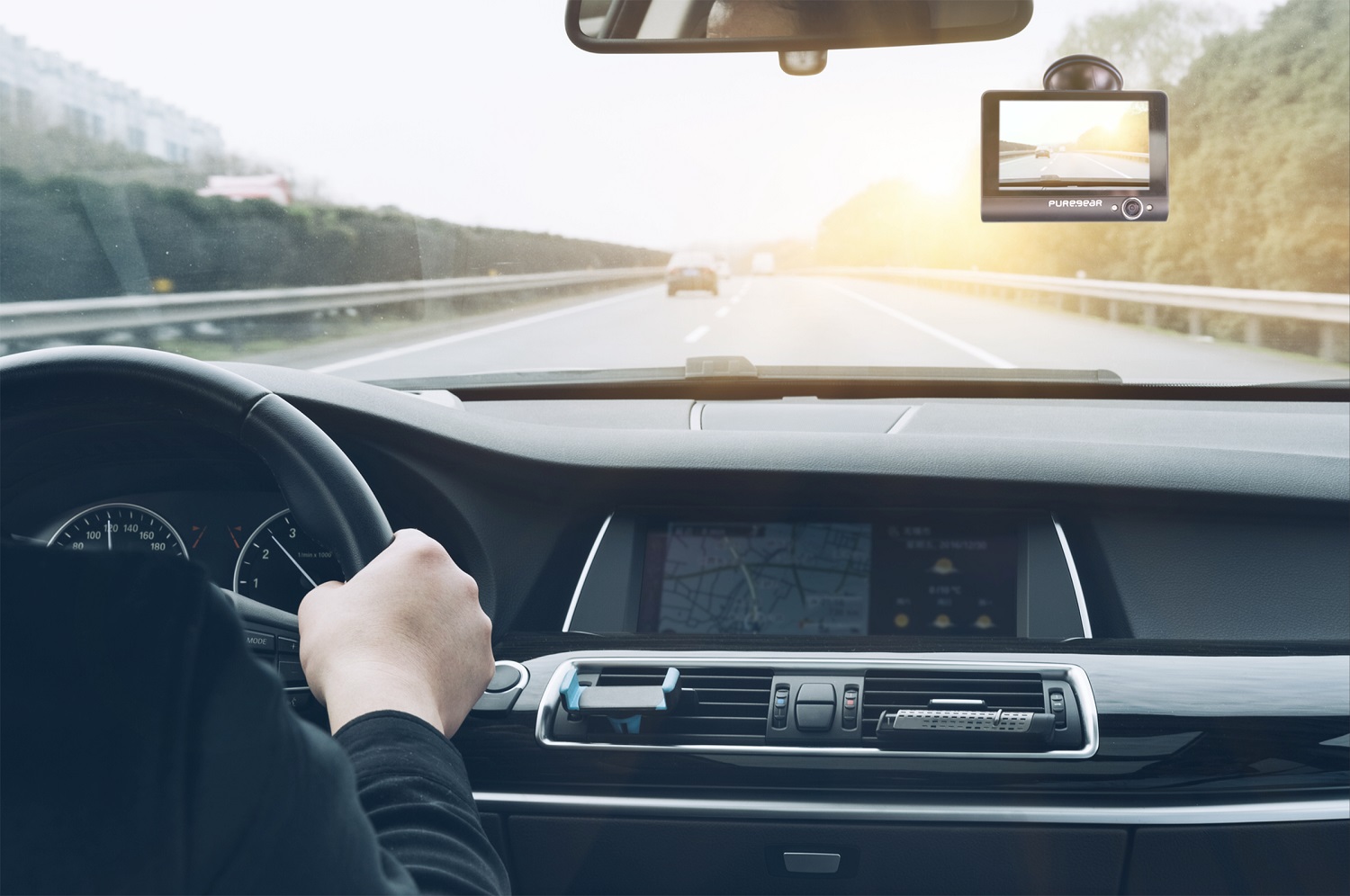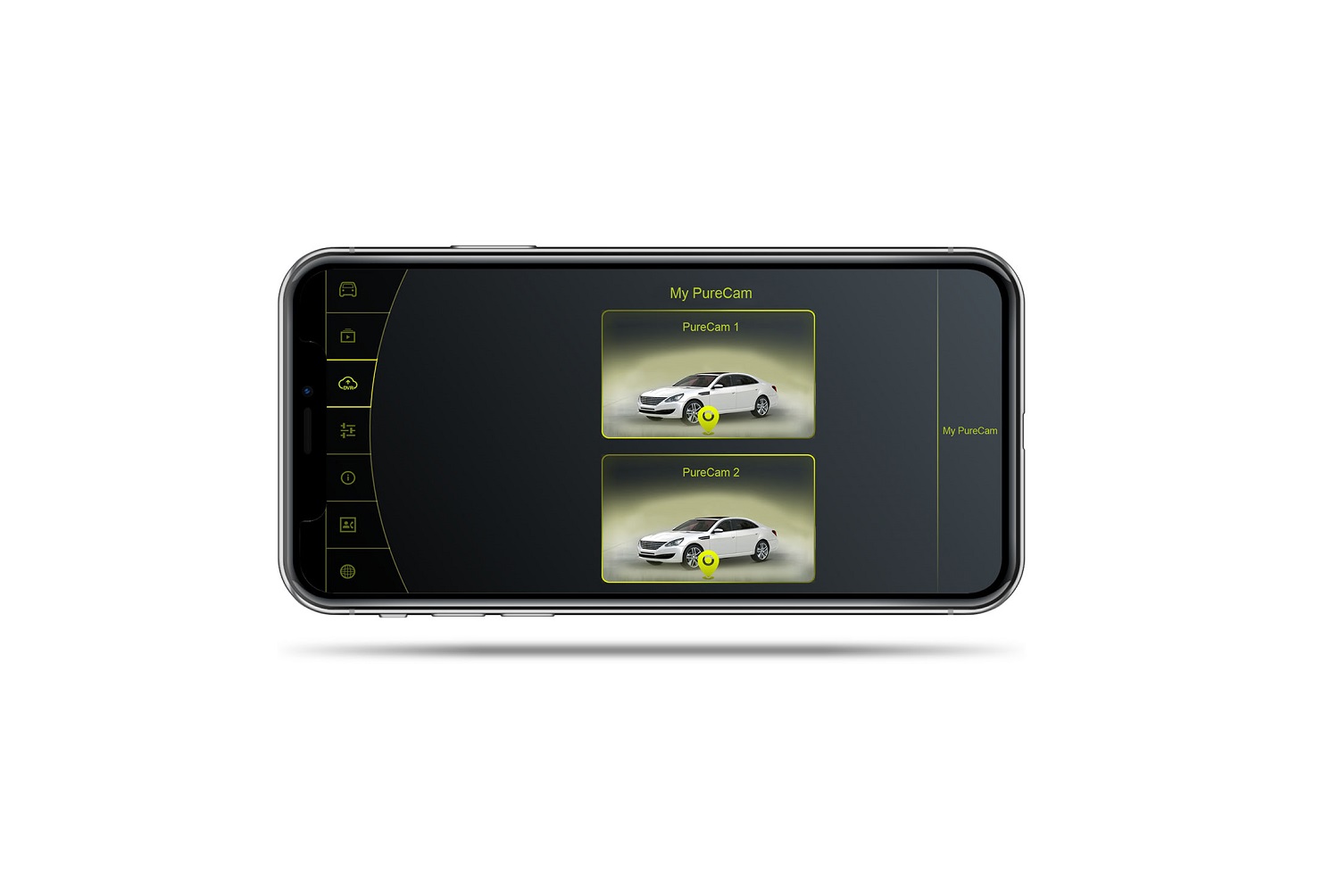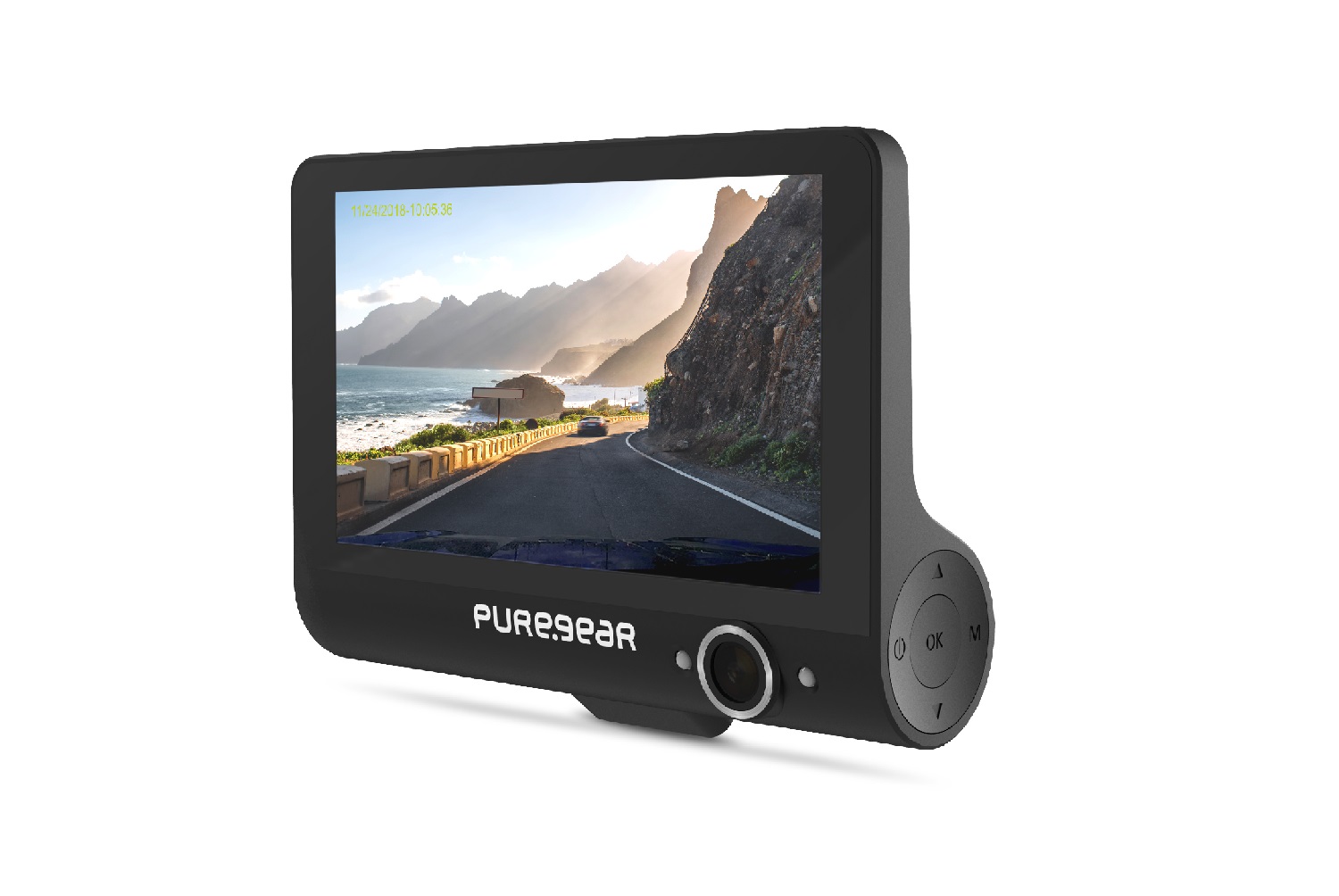Simply monitoring the road ahead isn’t enough to stay competitive in the increasingly crowded world of dash cams.
During CES 2019, PureGear unveiled a dash cam named PureCam that boosts the tech IQ of older cars by doing the work of two or three devices. Speaking to Digital Trends, PureGear senior product development manager Arthur Chen explained the firm noticed a big gap in the dash cam market. His team saw an opportunity to develop a 4G LTE-connected unit that records what happens ahead of the driver, monitors what goes on in the passenger compartment, and keeps the passengers connected on-the-go.
More CES 2019 coverage
- Our CES 2019 Hub: The latest news, hands-on reviews, and more
- Toyota rolls out an updated autonomous car prototype
- Hyundai’s Elevate ‘walking car’ can climb over rough terrain
- TomTom debuts end-to-end autonomous driving system
At its core, the PureCam performs the basic functions of an ordinary dash cam. Its dual cameras record footage inside and outside of the car, even when it’s dark outside, and built-in g-sensors automatically save the footage if they detect an impact (from an accident, a break-in, or another incident). The front-facing camera records in 1080p, 720p, and VGA; the rear-facing camera tops out at 720p. Regardless of direction, footage considered crucial is sent straight to the cloud, so the user can retrieve it even if the PureCam is stolen or damaged beyond use.
What helps the PureCam stand out from other dash cams on the market is that it doubles as a Wi-Fi hotspot. Activating this feature requires a sim card and a data plan, but it’s a smart way to turn an older car not compatible with Wi-Fi into a fully connected one. The hotspot function keeps up to three devices online at the same time.
The PureCam also lets users remotely keep an eye on their car at all times, from anywhere in the world, via a purpose-designed app compatible with Android- and Apple-powered devices. The app can show footage from up to three cameras on an unlimited number of smartphones. Why three? We asked, and Chen explained PureGear’s research shows the members of its target audience typically don’t own more than three cars. Don’t worry about draining your car’s battery, either. Vivian Chou, one of PureGear’s engineers, told us the PureCam is connected to the car’s OBD port, so it constantly monitors the battery’s voltage and automatically turns itself off if the reading falls below 11.8 volts.
At launch, the PureCam will only be compatible with cars equipped with an OBD port; sorry, but it’s not going to work in your hand-me-down Plymouth Horizon. Chen told Digital Trends the company is looking into other options, like a hard-wiring kit, but nothing has been finalized yet. Regardless of how it’s connected, it saves up to 680 minutes of footage when set to the lowest resolution and equipped with a 32 GB micro SD card.
The PureCam is on sale now through PureGear’s official website, though the company is also talking to retailers who have manifested an interest in carrying it. Online pricing starts at $249 for the unit and a 16 GB micro SD card, but keep in mind you will need to subscribe to a data plan to keep it connected. Chen told Digital Trends the average user should plan on going through two gigabytes a month, an amount of data which should cost approximately $20 per month. Pricing will vary depending on the internet provider and how often motorists use the PureCam.






